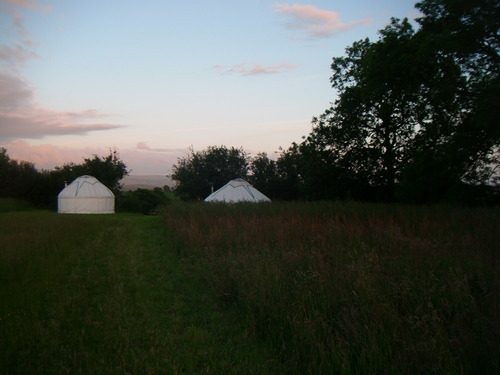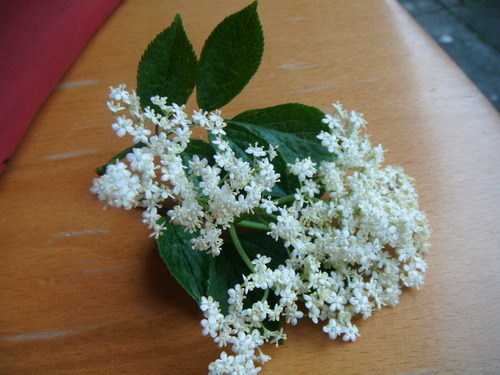I never expected one of my most enjoyable holidays to date would be staged so close to home - 3.5 hour ferry from Rosslare to Fishguard followed by ten days exploring the Welsh countryside.
Night one was an impromptu stay in Cardiff on our way to Bristol (England I know but it was necessary to cross borders to see the glorious Jesca Hoop in concert). In Bristol, stayed in these excellent apartments in a multi cultural area with lots of interesting people and shops. Malik’s foodstore across the road provided lots of great fresh fruit and veg.
While in the Bristol area, we seized the opportunity to drive down to Axminster to visit the River Cottage canteen for lunch. Had a fabulous meal of Fregola with asparagus, mushroom and some other little interesting veg that I had never eaten before, washed down with a bottle of Stinger Ale. Also stopped by for a look at Lyme Regis, a most beautiful seaside holiday town, full of ice cream and old people.

Back across the Severn Bridge for our next destination, which was our most anticipated: The Yurt Farm based in Crynfryn near Aberaeron.
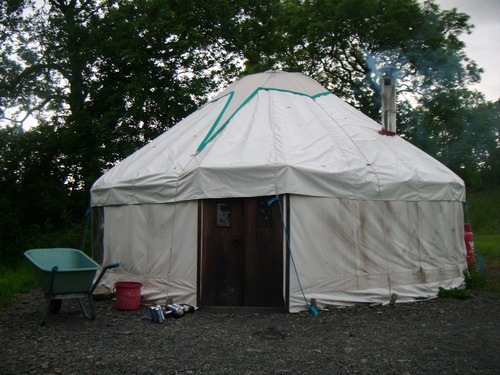
We had booked an 18ft yurt for three nights. As advised by the website, and a less than optimistic expectation of the Welsh weather (so similar to our own), we were armed with wellies and rain gear and it was well that we were, since it pissed rain relentlessly for the first twenty four hours of our stay. It didn’t bother us. Kitted out to suit the weather, we began to settle into our yurt, lighting the internal fire burning stove and preparing a dinner from the basket of new spuds and veg that was gifted to us from the yurt owners, supplemented with some lamb chops from their farm shop (run on an honest box system).
We were blown away by the farm. The layout is superb with communal facilities only a short walk from every yurt. The surrounding fields are lush meadows with beautiful wild flowers.
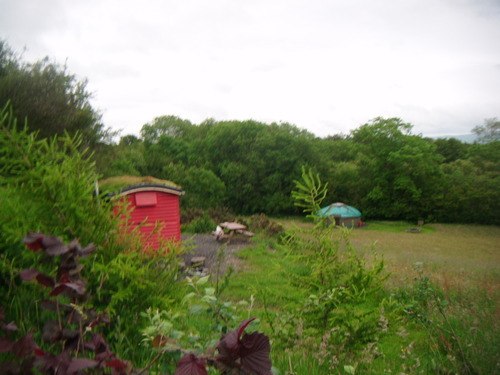
Hens roam freely and we frequently saw hawks and other large birds of prey flying overhead. Here is picture of the vista from outside our tent, a beautiful sight from the well crafted wooden seats:

Toilets are dry - basically you cannot flush them but they work on a composting premise using sawdust. Very comfortable, hygienic, fun and not smelly!
The showers are spacious and the water is hot (gas boiler backs up the solar power on cloudy days)
Yurts do not have electricity or running water but there is a lovely communal cabin with electricity points (worked off solar power, large sink and well stocked kitchen, table and chairs, armchair, wonderful library of books dealing with self sufficiency and eco living topics, and a hearty wood burning stove. I spent many hours perusing over their copy of The New Complete Guide to Self Sufficiency by John Seymour, informative, inspiring and at times, hilarious!
Despite sweltering blissfully all evening by the burning stove, at night the yurt is COLD, as we painfully discovered the first night. In the torrential rain, we were unable to carry our large blanket from the car as we had nothing to cover it with. BLACK BAGS everyone! BRING REFUSE BAGS! Light blankets were supplied but we underestimated how cold it would get once the fire had burned out.
But we were ready for it the next night! Bought a roll of bin liners for transporting the blanket, got two hot water bottles that were supplied by the farm and made sure the fire was packed up before we nodded off. Result was a toasty nights sleep.
A huge supply of chopped logs, kindling and fire lighters was generously available to us at no cost.
Yurts have a two ringed gas hob for cooking and are well stocked with good quality utensils, condiments and various teabags. Also provided is a handy lidded bucket for bringing water, a compost bucket for all your food waste and a rubber basin for bringing your dishes to the cabin. Outside was a hollow wooden box which I presume was the flower pot fridge! Worked a treat at keeping out beer cool:
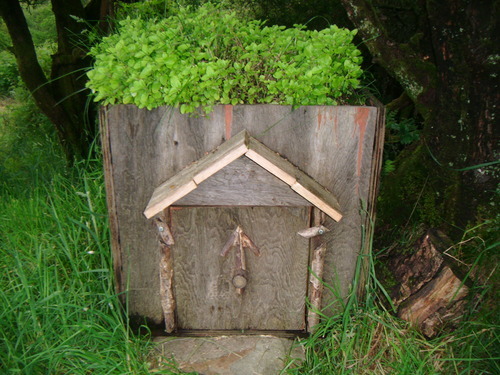
What really impressed us about the yurt farm was the quality of the equipment supplied. The beds were strong, the saucepans were heavy, the knifes were sharp. Everything was top quality. Even something as simple (or maybe very important when you think about it) as having soft toilet paper instead of cheap stuff made all the difference.
You could quite easily spend a fulfilling day without ever leaving the farm. Cook your breakfast on the hop, or even on the outside fire if the weather is good. Do some chores by carrying wear to the cabin or collecting firewood. Enjoy a cup of tea and read a book in the outside picnic table, or if the weather is bad, stretched on your bed in front of a blazing fire. Visit the pigs and chickens:
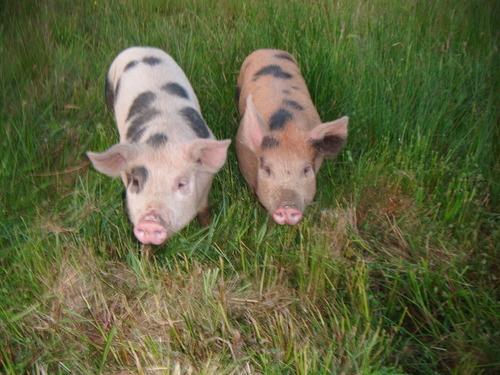
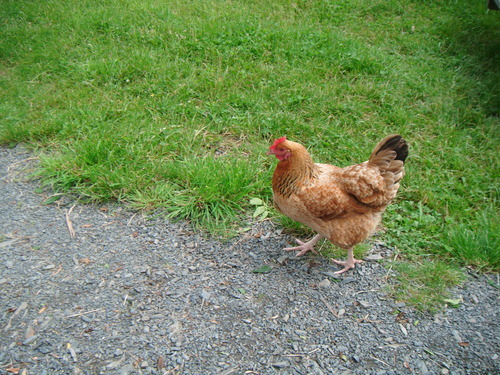
So everyone visit The Yurt Farm! It’ll make you a better person no doubt
